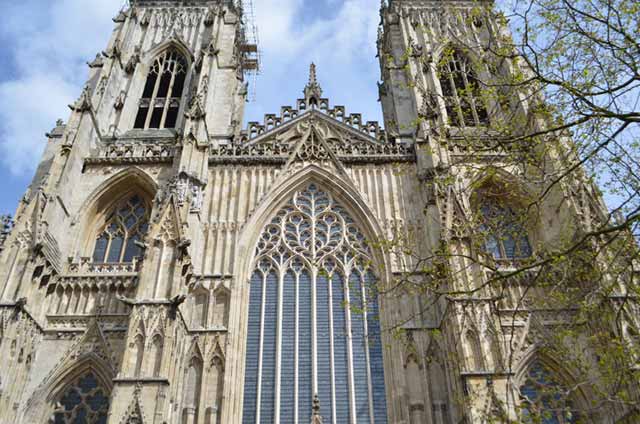York Minster is one of the greatest cathedrals in northern Europe, and part of a tradition of sanctity that stretches back to antiquity. The present building is located on the site of the Roman basilica, the ceremonial centre of the Roman fortress of Eboracum.
A small Anglo-Saxon wooden church was built near here in 627. Anglian and Viking-era burials have been found beneath the foundations of the current Minster, suggesting this area functioned as a cemetery.
The wooden church was later replaced by a stone structure, later destroyed by William I’s forces. A grand Norman building was erected by the end of the 11th century. Modified and improved continuously, the Minster was finally declared finished in 1472. Since then it has survived largely intact for over 500 years.
The Minster contains many treasures, not least its famous stained glass. The east window is the largest medieval window in the world and in recent years has undergone major restoration.
York Minster is the seat of the Archbishop of York, the second-highest office in the Anglican Church after the Archbishop of Canterbury. In 732, the Pope authorised the position, meaning the bishopric became an archbishopric. York’s first Archbishop was Ecgbert.
One critical feature originally absent at York Minster was the body of a notable saint. This was rectified in 1226 when William Fitzherbert, Archbishop of York, was canonized and made the city’s patron saint.
York Minster Folklore:
The Minster has its own array of phantoms. These include a ghostly dog, bricked up alive by cruel masons; a monk who wanders up and down the nave; a man wearing Elizabethan dress and an ex-Minster worker, called Dean Gale. He died in 1702 but still haunts his favourite pew.
12

No comments